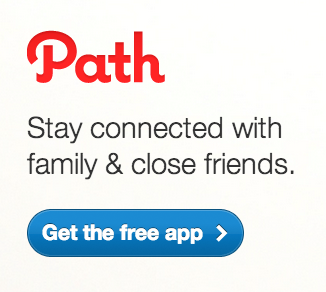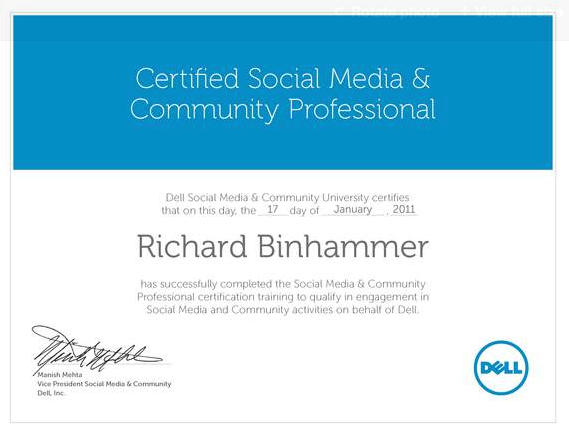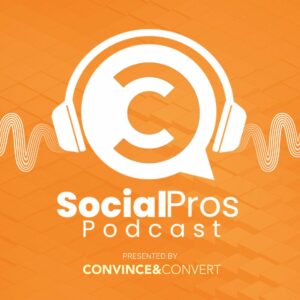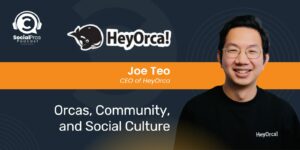Hosted By
About Social Pros Podcast:
Social Pros is one of the longest-running marketing podcasts in existence (10 YEARS and counting), and was recently recognized as the #1 Audio/Podcast Series by the Content Marketing Awards.
Our purpose? Making sure that we speak to real people doing real work in social media.
Listeners get inside stories and behind-the-scenes secrets about how teams at companies like Google, Reddit, Glossier, Zillow, Lyft, Marvel, and dozens more, staff, operate, and measure their social media programs. With 600+ episodes, the Social Pros Podcast brings the humanity of social media to the forefront, while providing incredibly useful marketing strategies that listeners can immediately implement.
Follow Social Pros on LinkedIn.
To inquire about becoming a guest or show sponsor, please email our Executive Producer, Leanna Pham, at leanna@convinceandconvert.com.
Apple Podcast Reviews:
The Social Pros podcast has quickly become a favorite in my feed! I'm consistently impressed by the engaging conversations, insightful content, and actionable ideas. I truly learn something every time I listen!
@Arlie KThis is absolutely an awesome listen for anyone in communications or social media!!
@Will31CThis podcast has become one of my staple weekly podcasts for learning about marketing! Love the conversations that they have and it's always enjoyable and educational!
@Simonstone95Love the podcast - informative, in depth and spot on for any business size.
@MissTriathlon
Richard Binhammer of Dell joins the Social Pros Podcast this week to discuss his new direction, the role of corporate communications in social media marketing, and how to scale the effects of social media campaigns. Read on for some of the highlights or listen below for the full podcast. Listen Now Click the play button to […]

Richard Binhammer of Dell joins the Social Pros Podcast this week to discuss his new direction, the role of corporate communications in social media marketing, and how to scale the effects of social media campaigns. Read on for some of the highlights or listen below for the full podcast.
Listen Now
Click the play button to listen here:
[podcast]http://socialpros.podbean.com/mf/web/p9s9jd/SocialProsEpisode35.mp3[/podcast]
Download the audio file:
http://socialpros.podbean.com/mf/web/p9s9jd/SocialProsEpisode35.mp3
The RSS feed is: http://feeds.feedburner.com/socialprospodcast
Find us on iTunes: http://itunes.apple.com/us/podcast/convince-convert-blog-social/id499844469
Please Support Our Sponsors
Huge thanks to data-driven social media management software company Argyle Social for their presenting sponsorship, as well as Infusionsoft, Janrain, and Jim Kukral at DigitalBookLaunch. We use Argyle Social for our social engagement; we use Infusionsoft for our email; Janrain is our crackerjack social integration company, and Jim is our guest host for the podcast (and a smart guy).
Social Pros Highlights For Your Reading Enjoyment, Thanks to Speechpad for the Transcription
The Roots of Social Media

Richard: My background in social starts in the summer of 2006, so this is what, six years later? In the summer of 2006, I was one of the first Dell employees who began monitoring blogs and actually engaging with bloggers at the time. This was before the days of Twitter and Facebook.
I’ve been in the social space ever since, working with the folks at Dell. Everything right through to questions about being part of the team, about how do we scale this, make it more effective. Because one person can’t monitor 20,000 posts a day, which is what’s posted every day about Dell, roughly, and be able to sift through that information.
Therefore it raises questions about how do you scale this, what’s social all about as it relates to a large business. I’ve been involved in those kinds of questions for the past six years, and then programs around actually moving forward in that respect, which I’m sure that we will talk about.
Now I’m leaving Dell and I’m going to do something else, but I’m taking a bit of a break, spending some time and going back to my roots, being out in social media every day and having a little bit of fun and enjoying myself.
Jay: You’re able to do it without having an actual rationale, right? I feel sometimes all of us have made this so much about business in the last four or five years that it has become a little less interesting and certainly less personal than it used to be.
Richard: Yes, I think you’re right. It’s just fun to get back into it on my own without having the responsibilities and the words and prospective of a large organization, which then is always raising questions about does this work, doesn’t it work, what’s it for, how do you do it, how you scale it, whatever the series of questions might be.
In this way I’m just back into being social. I started my new Twitter account, @Rbinhammer, and I’m having fun just ramping up again and being out there and having not 13,000 followers, but a flow that I can actually follow and enjoy and learn something from. I’m kind of back to my roots a little bit.
Jay: Well, after this Social Pros appearance you’ll be back up to 13,000 in no time. We’re also expecting a lot more not safe for work posts now that you’re not associated with a major brand.
Richard: Yeah, exactly. We’ll see.
Eric: I’ve long wondered how many folks out there who have these massive Twitter followings, if they actually have an anonymous second handle that they use for their not safe for work and maybe more salty social media content.
Richard: Right, or probably that they organize things pretty effectively in lists, is another way of going about doing that. Then paying more attention to the list than necessarily the flow, feel of the raw flow.
 Jay: A lot of people are using Path now in the social media community to serve that function, that highly curated function, where you’re only going to interact with 50 or 100 people instead of many thousands. In fact, we just got back the top line research from the Social Habit project that I’m working on with Tom Webster and Edison. The impact of Path I think is going to be a real shocker for a lot of people.
Jay: A lot of people are using Path now in the social media community to serve that function, that highly curated function, where you’re only going to interact with 50 or 100 people instead of many thousands. In fact, we just got back the top line research from the Social Habit project that I’m working on with Tom Webster and Edison. The impact of Path I think is going to be a real shocker for a lot of people.
Richard: Is that right?
Eric: Actually, I had dinner with someone, actually Tom Webster was at the table. I had Dreamforce this week and someone mentioned one of the reasons they used Path is because they can use expletives on Path that they can’t use on Twitter.
Richard: The other thing is if you go back to the roots of social, the whole social networking and social media, it wasn’t about mass communication; it was really about niche communication, right? Really forging those one-on-one or small group relationships.
It’s a bit of dichotomy really when you think about it, because on the one hand social’s all about those niche relationships to those individual relationships. On the other hand, when it’s looked at from a marketing perspective and others, there’s that dichotomy of the perspective that it’s a mass medium, and people are all about what they’re publishing and how big a reach it has and everything else as opposed to those roots.
I think social media still has to, or the people in the space, and one of the things that I’m thinking about is how do you bring that together? Because there’s a bit of a chasm there I think.
Jay: Yeah, it really operates at cross purposes. The premise was that it was more about the social and really not at all about the media, but clearly that doesn’t scale. You can’t have one-to-one relationships with 25,000 mentions a day as you’ve said that Dell gets, so at some level you have to scale.
I haven’t looked at the public Twitter stream. I think I have 60,000- something followers, and I follow back half of those or something like that. I haven’t looked at the public Twitter stream in two years, and have no plans to do so.
It tends to eat itself from the inside out. I think that’s what a lot of people who have been doing this for a while, they’re starting to feel like okay, this is fundamentally different. I feel like we were sold one story, and now we find ourselves, through no small measure our own fault, living a totally different tale.
Richard: Right. We fell back to these habits that we know as opposed to inventing new habits and ways of doing things that’re different, right? Therefore to scale this thing, you start to treat social media almost the same way you’re trying to treat mass media. You pitch your story and hope it sticks.
 As opposed to in the avalanche of information, which is the term I’ve coined lately as opposed to the fire hose of information. In the avalanche of information, one has to worry about how does your content become valuable? The only way it has value is if people connect with it, and therefore it becomes those people connections that it has to revert to, otherwise your content’s going to get lost.
As opposed to in the avalanche of information, which is the term I’ve coined lately as opposed to the fire hose of information. In the avalanche of information, one has to worry about how does your content become valuable? The only way it has value is if people connect with it, and therefore it becomes those people connections that it has to revert to, otherwise your content’s going to get lost.
Jay: Interesting point Richard, and one that doesn’t get talked about enough. There’s conversation and thinking around content marketing, there’s conversation and thinking around social of course, and there’s conversation and thinking around “influence” and outreach and advocate harnessing. But it really has to work together.
I think certainly what we see all the time in practice is that if you put a piece of content out there into that avalanche, if you know the author and you trust the author and you have a relationship with the author, your propensity to get behind that piece of content is so disproportionately higher than if it just comes out of the ether. So much of it is about connections.
Richard: Then when you get behind it and you’re sharing it with other people, then they also get behind it, or pick it up and pay attention to it. All of a sudden the content is gaining in value and resonance, in a group of people that are all connected by relationships.
Jay: It’s about our Ponzi scheme for trust and reputation.
Richard: Yeah, absolutely. Yeah. I hadn’t thought of it that way. I’ll have to write that one down.
Communities of Scale
Eric: Richard, obviously you’ve been in this business for a long time, and you have a very wise view of how this world works, based in large part on your experience. How did you see this play out in Dell? In your time there, what ways did your organization do this? Maybe a particular scenario or a particular campaign.
Richard: Sure. I understand the importance of campaigns, but campaigns when you think about it, you end up investing a lot of capital, whether it’s social capital or financial capital, right? Campaigns are a big investment. You blow it all at once, and you’ve got some quick hits, but in social a campaign doesn’t really sustain much.
I think that’s a big problem. I don’t think people always think about that when they talk about a marketing campaign with social. You throw a bunch of money or a bunch of other resources at it, and it may give you a quick little hit, but it doesn’t sustain that relationship unless you do something else to keep that quick hit growing into a much stronger and trusting relationship.
That’s always a big problem I think, because campaigns are a time-limited and dollar-limited and focus-limited effort. I was always more focused on how you scale this thing, because fundamentally, if you go back to what we were talking about earlier, social does not scale, or it doesn’t scale for business in a way that traditional business would think about.
You can’t have just like a small group of people and expect them to deal with social…
Jay: Yeah, you can’t hire another community manager every time you get another 10,000 Twitter followers, right?
Richard: No, no. There are two complications there. One is in social, people want to connect with the people that know things, right? Again, if we go back to the premise about what social is about, it’s about building those relationships and connections. The web’s moving at such a fast pace that if you have a small group, you can’t refer it.
There’s a blog post today that I saw because I happen to be in the central group, almost like a corporate communications department where they get the media call, and they feel out the reporter and everything else. A day later or whatever they talk to the expert in the business, and then they get back to the reporter, and then finally they do an interview and three days or four days later, a story appears in the New York Times.

In social, four days is like 40 years. It’s gone. In Twitter or Facebook or even on blogs, it’s really gone. There’s a time element to social because the web’s moving at such a pace, plus like I said the avalanche of information. There’s no way that a small, central team can work as an air traffic control and coordinate it all.
The other part of it is when you look at social, social by and large, not in equal volumes, but by and large touches almost every aspect of the business. My very early days when I was actually doing the one-man show, monitoring and responding to blogs, I saw everything from people commenting about business processes related to how we ran the business, because of someone’s experience trying to interact with the company, to people talking about pricing on Dell.com or something like that.
Or corporate social responsibility issues, as well as what we today think about is marketing. There’s all this big focus on social marketing when, in fact, really social touches every aspect of the business in different degrees, but it does. Comments from people can really touch on everything from corporate reputation to the ins and outs of customer service and all kinds of other things in between.
I think that’s where you really have to have the subject matter experts and people that have a lot of responsibility in the business be involved in social, so that they’re connecting with these people directly.
We had a strategy, which was embed social media across the company as a tool to be used by different parts of the business in ways to improve the business.
Dell’s Social Media Training Program
Jay: Is your role in that then, or is a central repository role more best practices and training and support and making sure people are not going off the reservation?
Richard: Yes, absolutely. The corporate policy, the training. That’s why we have something like 6,000 people that have been through four different courses. The training program has something like 15 courses, but there were three mandatory and then pick your elective.
Once you had those four courses under your belt you were actually a Dell-certified social media and community professional, which enables you to go out and do things on the web and interact with customers directly.
Jay: What were those courses? How much time in seat is that?
Jay: Yeah, that’s pretty solid. Is there a refresher program, since things change so often in social?
Richard: There is a bit of a refresher program, but not necessarily tied to-once you’re certified you’re certified right now. We found that most of our certified people were pretty active. Then we do special things for the certified people, like have a special event or something where they would come and meet with a social media thought leader that was in town, or just have a general brainstorming discussion.
We had a special group on Chatter for them where they could share with each other and keep their own learning and knowledge growing. I think those things are really important to how business starts to interact with social in a more real way.
Jay: That’s something that we consider in my consulting practice. When you’re trying to find the certified social participants in what Marcus Sheridan calls “insourcing” your participation, did you ask for volunteers and say who is interested in social media, or who has a proclivity toward doing this? Or did you assign people based on job function?
 Richard: No, no, it’s completely open for people to sign up. That program’s been about two years in the running, and I think part of the uptake, we just made it wide open. We didn’t assign people. Now, if we found people in the business that were going to become involved in social because their business wanted to do it, then we assigned them or told them that they need to get certified.
Richard: No, no, it’s completely open for people to sign up. That program’s been about two years in the running, and I think part of the uptake, we just made it wide open. We didn’t assign people. Now, if we found people in the business that were going to become involved in social because their business wanted to do it, then we assigned them or told them that they need to get certified.That’s a little bit backwards. We didn’t go out and find them, but if you found someone that was about to launch on a new effort to come in to talk to you about best practices, you’d say well, you’d better get trained first.
Jay: Generally speaking it was volunteers?
Richard: Yeah. When we started this two years ago, we were surprised at the uptake. I think in the first few months, six months or something, we trained several thousand people who were just shocked.
When you sit back and think about it, and that was because we just opened the doors and several thousand walked through them. We were like, “Wow.” I think there’s a pent up need for that in business, because people are aware that social’s impacting their lives personally and they’re using it, and they want to do something for their company or where they work, but they don’t necessarily know how, what, when, or where, or why, and what those rules may or may not be. What is the best practices?
Social Media and Corporate Communications
Jay: It’s a really interesting situation, and I talk about this a lot that social is probably the only part of marketing and customer service where we use the same tools in business as we use personally. We’re not making our own print ads. We’re not making our own radio spots. We’re not making our own TV commercials.
You look at your Facebook news feed, it’s company, wife, friend, some other company, friend. It’s pixel for pixel, side by side, people and companies. That’s really unprecedented, and that’s why I think you have a lot of interest to get trained in companies because everybody is familiar at some level with social, or most of them are. They’re just not sure how to deploy it on behalf of the enterprise as opposed to on behalf of themselves.
Richard: Right, absolutely. I think you’re absolutely right on that. That’s why I said two years ago when we opened the doors, there was this huge, almost a groundswell, to use a Forrester term, of people taking courses. We were all scratching our heads, ‘what’s going on?’
When you probed underneath it or talked to people, it was that they’re using it in their lives, they see people every once in a while, maybe some of their friends talking with a company or whatever, but they didn’t know how to go about it or what to do for the company.
And what the company’s view was. Don’t forget the traditional rule was if the newspaper reporter calls, call corporate communications, right? You refer that call to corporate communications, even if you happen to be the expert on product X and the reporter’s calling you about product X. You always refer it to corporate communications first.
Jay: At that point, the chances of you knowing more than corporate communications is 100%. You obviously know more about that than corporate communications, but it has to go through those channels.
Richard: Yeah, and social kind of changes that, like I said. When you start thinking about the volume and the expertise and all kinds of other things
Jay: Even a year or two ago when you had, I think you said you had two sets of rules. If somebody did outreach in social media, it was okay if you’d been trained to answer back and participate, but if it was a “reporter,” you would still go through that corporate communications function.
Now that all the reporters in the world are using Twitter and LinkedIn and Facebook, blogs, it’s a difference without a distinction.
Richard: Yeah. The distinction is falling apart. Now there is a fine line I think still, which is the corporate communications person is still the official spokesperson for the company. When you get into matters of company policy around X, Y or Z or a big problem, Joe might know about it, but corporate communications reflects the company standard, right? The gold standard almost?
Jay: The clients that we work with, their rule is if it’s something that can move the stock price, only official people can talk about it.
Eric: I think that’s a pretty good rule.
Richard: It’s not a bad rule at all.
Richard: The other one is often if the company has a policy around X, Y, or Z the only person that can really, a manager per se or whatever, can’t necessarily deal with that. They’re dealing within the rules of the company. Corporate communication still has a pretty important role there.
I still think corporate communications has a great future. I’m not sure every corporate communications person understands that. I’m not saying that about Dell, I’m just saying generally speaking, I’m not sure that the corporate communications profession has quite latched onto social the same way that marketers have.
Social Media Stat of the Week: 50% of Traffic for Small Businesses Comes From Facebook

Eric: I have a bit of numerical goodness indeed. This week’s stat of the week comes from a study conducted by a Northwestern professor, Rich Gordon. Basically this guy, as well as Syndio Social CEO, Zachary Johnson, took a sample of 300 Chicago-based websites to try to understand analytics data and referral source data about how local drives traffic, and particularly how does social media drive traffic as well.
Interestingly, there’s a really dense study you can read, but the piece that popped out to me was of these 300 websites, the ones that they categorized as small websites, almost 50% on average of the visits for these sites came from Facebook, which is mind boggling, and I think illustrates the local marketing opportunity for small businesses on social networks, in particular Facebook.
The data for Twitter was much smaller, 5% or less for large, medium and small businesses. It was just a blip compared to the traffic from Facebook.
Jay: We’re seeing a lot more of those smaller businesses, his obviously isn’t appropriate for that study, but basically eschew the website entirely and say, “Let’s go Facebook only,” that it is almost the mini-website for a lot of companies.
It’s interesting though, I would love to see a sub-study with that data set that looks at how much of that traffic is people who are already customers of that particular company. Are they just getting the same people back to the website over and over? Because I always feel like, especially for small business, that Facebook is really a place where you communicate with people who already have a relationship with you, not where you communicate with people who don’t know who you are.
Social Pros Shoutout
Jay: As an international man of mystery and leisure, Richard Binhammer has had an enormous amount of time, more so than most guests, to come up with compelling and engaging, truly unique Social Pros shout outs, people or things in the social media universe that inspire him that do not get the credit they deserve. Good sir, what have you for us?
Richard: I’ve got four quickies that I think are a nice little mix of things. Mathew Ingram, @MatthewI, writes for GigaOM. I think he just has phenomenal insight on media and social and news and where these things are all going, and is also just a really good writer and very insightful. Matthew Ingraham is number one.
Number two, Andrew McAfee. He’s at MIT, and he writes about enterprise in business, which I think is the soft underbelly of ‘social business’ that doesn’t get as much attention as the social web does, but the application of social inside business for more productivity and collaboration and breaking down silos and more effective business. I think that issue is continuing to emerge, but still hasn’t got its full credence on the web yet.
Eric: I’ll second the shout out to Andrew McAfee, Richard. His stuff is really good.
Richard: Yeah, he’s really smart and just does great, great stuff I think. My other one would be Mitch Joel from Six Pixels of Separation. I just think Mitch works up in Montreal, and you guys probably already know him, but Mitch is just phenomenal I think when it comes to social media marketing and some insights as it relates to marketing and being true to yourself, I think. He just blows me away often.
The last one is Beth Kanter for her work with social media non-profits. How’s that.
Jay: She knows more about that than anybody else in the world. That’s a darn good list.
Richard: Is that an okay list for you guys?
Jay: It really is. It’s fantastic. We should have all four of those people on the show. Mitch actually was one of the people who inspired us to start this podcast, as a matter of fact. Always nice to shout him out. He’s actually been really kind to me, most recently helping me with my new book. That’s been very nice of him as well.
Richard: That’s classic Mitch, too. Just always giving.
Jay: Absolutely. Absolutely. Well, we know that you are going to give a lot to somebody somewhere, once you decide to end your days of leisure, tweeting in a hammock. That’s how I envision you right now.
Richard: Tweeting in a hammock.
Eric: With a margarita and a cowboy hat.
Richard: Or just focusing on getting my Klout score back up.
Eric: First things first.
Next Week’s Guest: Brian Stokoe, Social Media at Caterpillar







